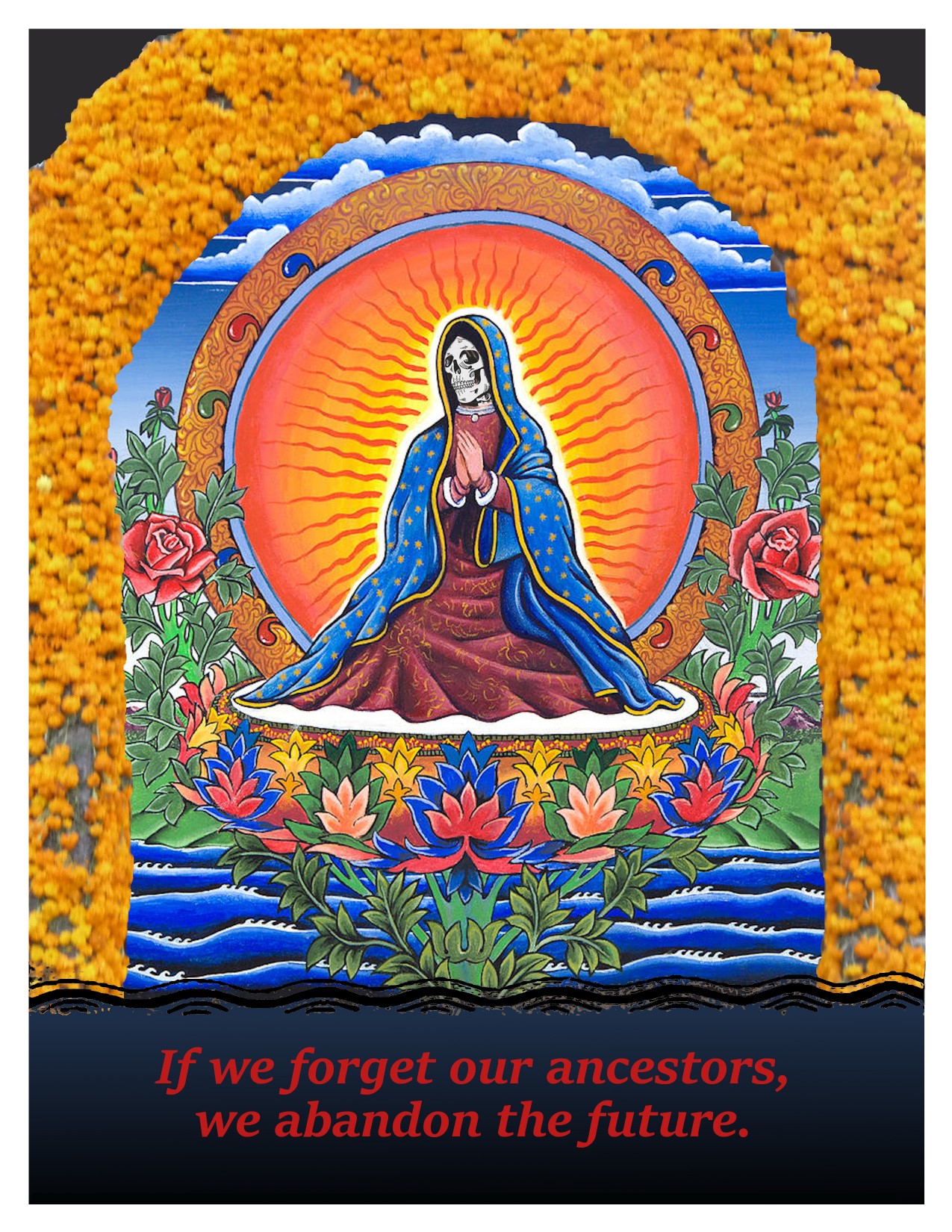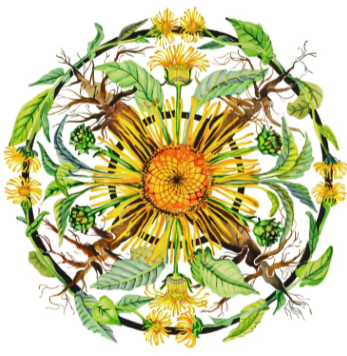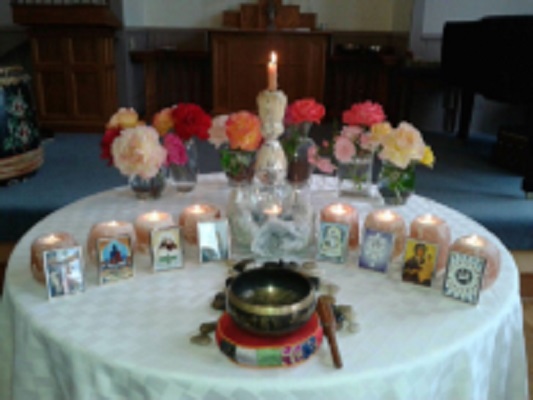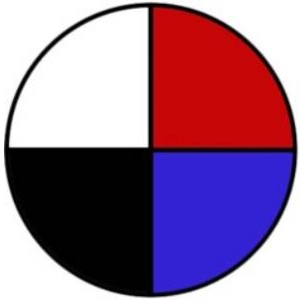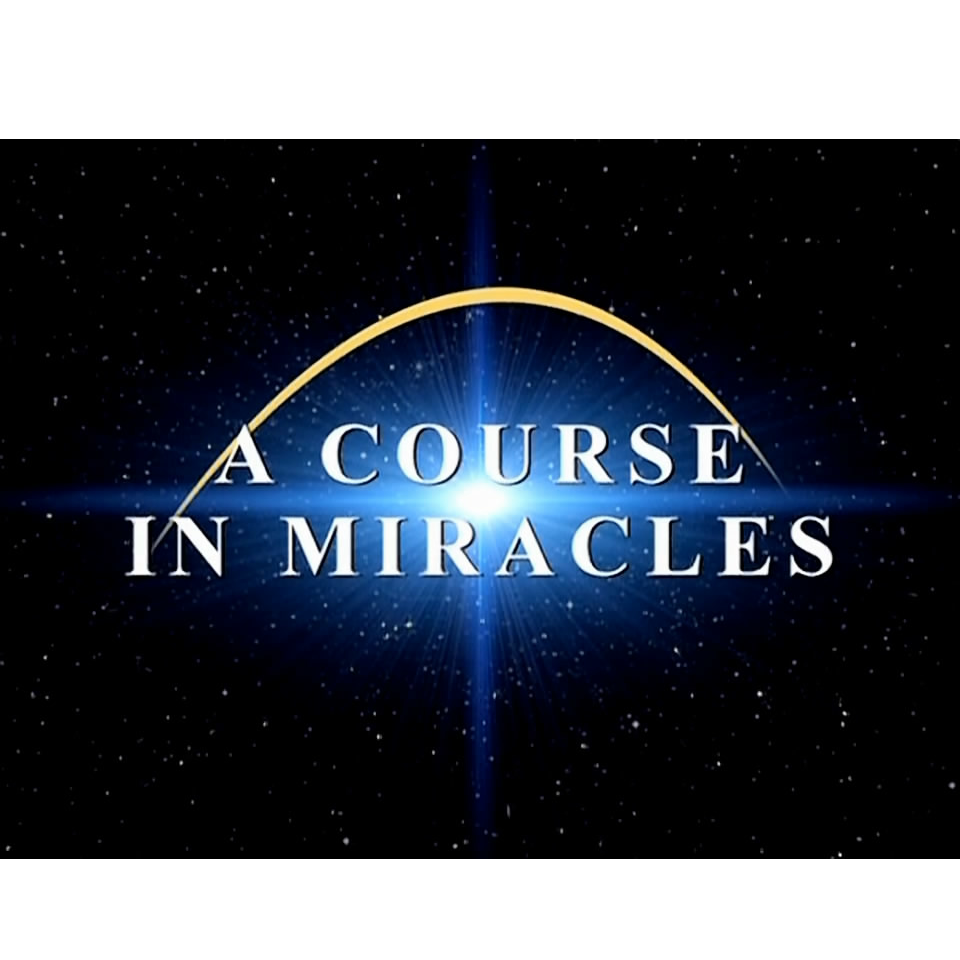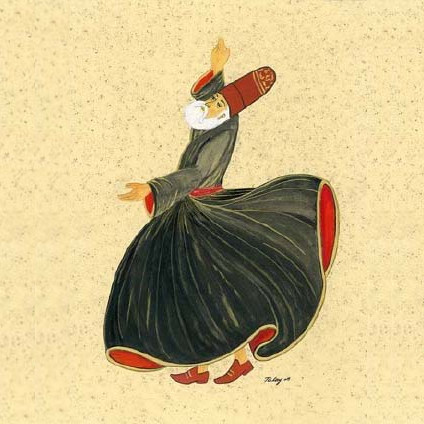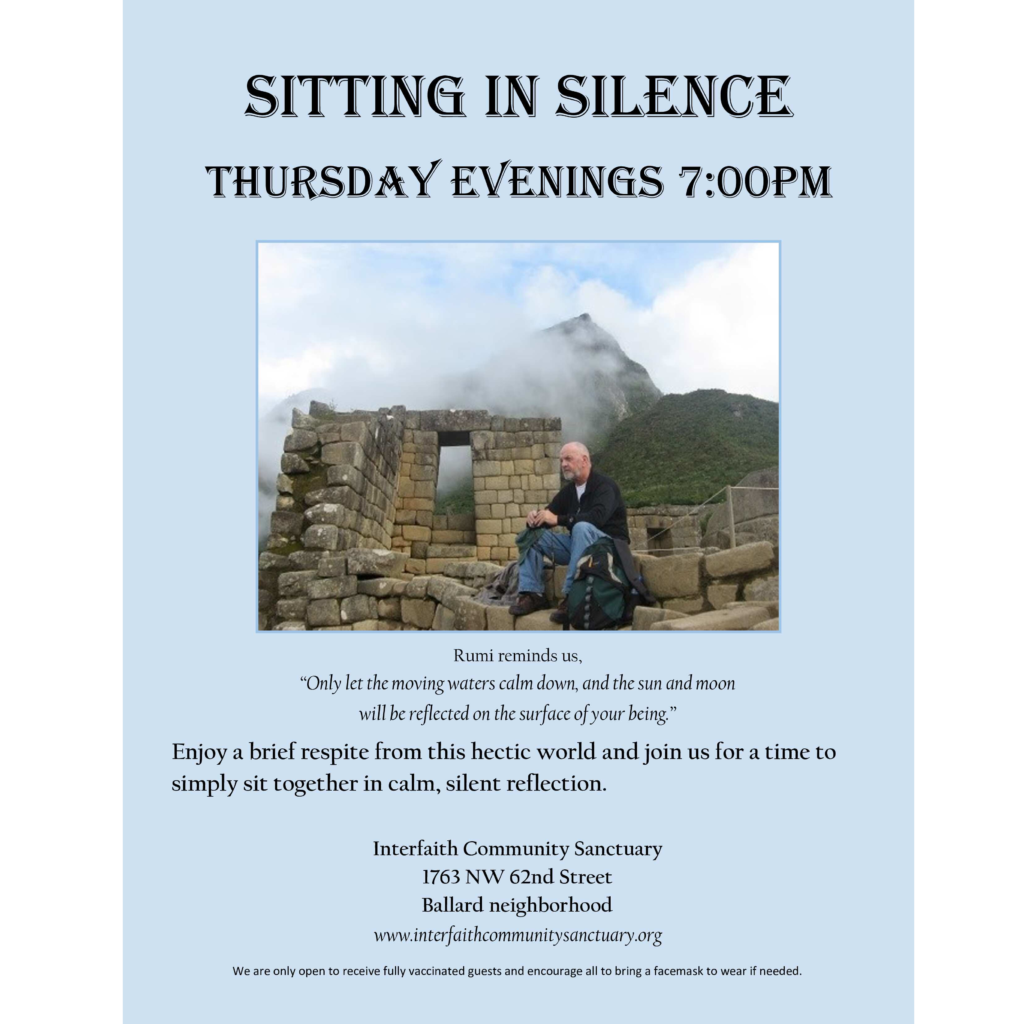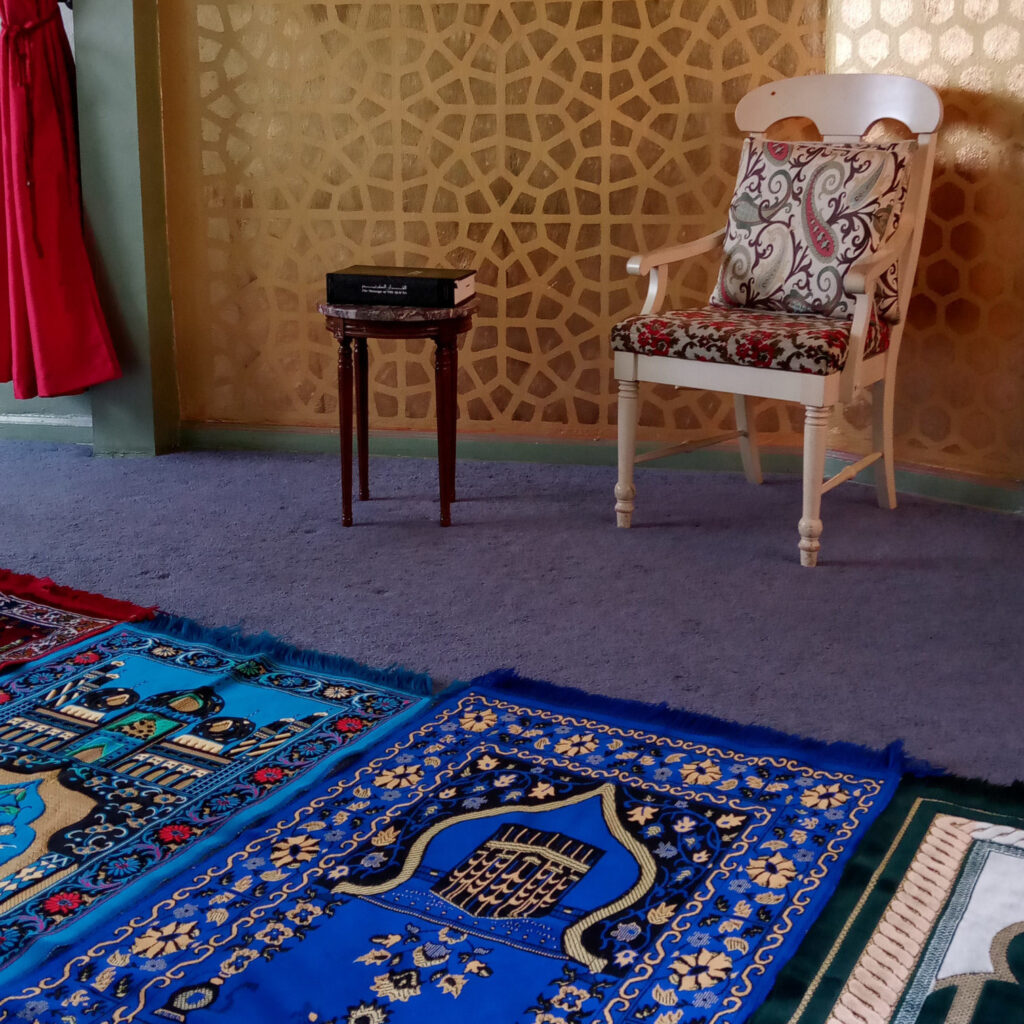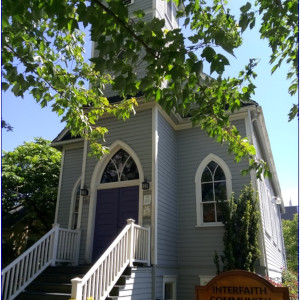Also All Saints Day and All Souls Day!
This will be an in-person gathering. There will be no Live Stream because of the focus on personal sharing.
We will gather for prayer, ritual, celebration and small-group discussion to invoke the ongoing presence of our teachers and loved ones who have passed on.
Feel free to come earlier in the week to add your items to our communal altar.
Pictures of beloved ones, loved ones’ favorite foods, representations of loved ones favorite activity, favorite flower, special joys like a musical instrument the loved one played… are all appropriate for the living altar.
We can enjoy the favorite food of our loved ones following the service as the veil between worlds is thin at this time and it is believed that relatives respond to the call to celebrate with us.
Isla Ross will share healing chants with us!
Some History: Origins of Day of the Dead
The roots of the Day of the Dead, celebrated in contemporary Mexico and among those of Mexican heritage in the United States and around the world, go back some 3,000 years, to the rituals honoring the dead in pre-Columbian Mesoamerica. The Aztecs and other Nahua people* living in what is now central Mexico held a cyclical view of the universe, and saw death as an integral, ever-present part of life.
In ancient Europe, pagan celebrations of the dead also took place in the fall, and consisted of bonfires, dancing and feasting. Some of these customs survived even after the rise of the Roman Catholic Church, which (unofficially) adopted them into their celebrations of two Catholic holidays, All Saints Day and All Souls Day, celebrated on the first two days of November
The Day of the Dead, is a combination of indigenous Aztec rituals and Catholicism. It is a public holiday in Mexico, and the celebration has been adopted in other parts of the Americas and by people everywhere of Mexican heritage. Festivities begin on October 31 and culminate on November 2 (All Souls’ Day).
Video
Dia de Los Muertos: A History
*The name Nahua is derived from the Nahuatl word-root nāhua- [ˈnaːwa-], which generally means “audible, intelligible, clear” with different derivations including “language” (hence nāhuat(i) [ˈnaːwat(i)] “to speak clearly” and nāhuatl [ˈnaːwat͡ɬ] both “something that makes an agreeble sound” and “someone who speaks well or speak one’s own language”). Nahua is the language Juan Diago spoke as he announced his vision of the virgin of Guadalupe.



